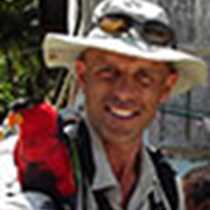Fortuna Bay, Stromness and Grytviken, South Georgia
After our visits to Elephant Island and King Haakon Bay, today we continued our exploration in the epic footsteps of ‘The Boss’ - Sir Ernest Shackleton.
This morning Endeavour entered Fortuna Bay, where we landed a dedicated band of hikers who went ashore for the four mile hike to the whaling station in Stromness Bay. This was the last leg of the journey across South Georgia for Shackleton and his two companions. Then he was able to launch the rescue that picked up the three men and the James Caird from King Haakon Bay and eventually the 22 men left on Elephant Island.
This afternoon we completed the Shackleton story with a visit to his grave in the whalers cemetery at Grytviken. It was in South Georgia during his expedition on board the Quest that he died of a heart attack in 1922.
During our trip, it has been sobering to compare and contrast the conditions under which we have made the journey with the conditions then. Today, our modern expedition ship has every comfort. We have modern clothing fashioned from the latest fabrics. We have made the journey in late summer, rather than winter. We have hiked over rocks and grass instead of snow. But on the beaches, we have had to deal with fur seals, one thing which Shackleton and his comrades did not have to contend with.
In part, this was because the men were here in the winter, when the fur seals would have been at sea feeding. But at the start of the 20th century the fur seal population in South Georgia had been driven to near extinction by sealers. From a small remnant population there has been a remarkable recovery, and now the beaches of South Georgia are inhabited by literally millions of fur seals. At the height of the breeding season in December they are aggressive and dangerous to visitors. Now, we have mainly been encountering this year’s pups (pictured), playfully aggressive, practising for adulthood. Most are a dark brown-black colour, with a minority (about one in one thousand) of blonde pups among them. Their recovery has been heartening, a sign of the resilience of nature and their abundance a sign of the richness of the Antarctic marine environment.
After our visits to Elephant Island and King Haakon Bay, today we continued our exploration in the epic footsteps of ‘The Boss’ - Sir Ernest Shackleton.
This morning Endeavour entered Fortuna Bay, where we landed a dedicated band of hikers who went ashore for the four mile hike to the whaling station in Stromness Bay. This was the last leg of the journey across South Georgia for Shackleton and his two companions. Then he was able to launch the rescue that picked up the three men and the James Caird from King Haakon Bay and eventually the 22 men left on Elephant Island.
This afternoon we completed the Shackleton story with a visit to his grave in the whalers cemetery at Grytviken. It was in South Georgia during his expedition on board the Quest that he died of a heart attack in 1922.
During our trip, it has been sobering to compare and contrast the conditions under which we have made the journey with the conditions then. Today, our modern expedition ship has every comfort. We have modern clothing fashioned from the latest fabrics. We have made the journey in late summer, rather than winter. We have hiked over rocks and grass instead of snow. But on the beaches, we have had to deal with fur seals, one thing which Shackleton and his comrades did not have to contend with.
In part, this was because the men were here in the winter, when the fur seals would have been at sea feeding. But at the start of the 20th century the fur seal population in South Georgia had been driven to near extinction by sealers. From a small remnant population there has been a remarkable recovery, and now the beaches of South Georgia are inhabited by literally millions of fur seals. At the height of the breeding season in December they are aggressive and dangerous to visitors. Now, we have mainly been encountering this year’s pups (pictured), playfully aggressive, practising for adulthood. Most are a dark brown-black colour, with a minority (about one in one thousand) of blonde pups among them. Their recovery has been heartening, a sign of the resilience of nature and their abundance a sign of the richness of the Antarctic marine environment.




